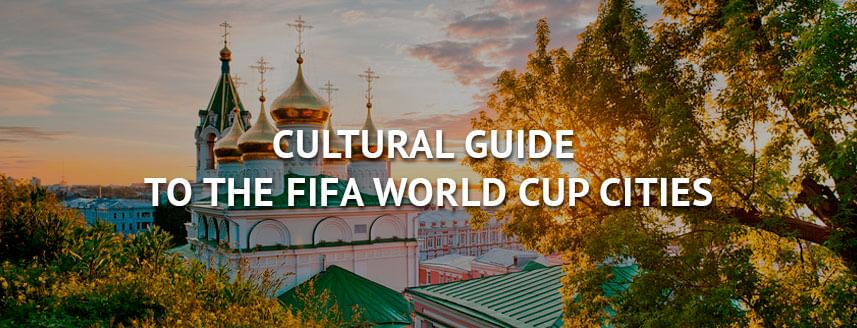Top 5 Kaliningrad Attractions
Culture.ru presents all Kaliningrad’s main attractions: a 14th century cathedral, the ancient Rossgarten Gate, the Queen Louise Memorial Protestant Church and many others.

Photo courtesy of Sergey Kurov / Photobank Lori
The Rossgarten Gate in Kaliningrad

The Rossgarten Gate is one of the seven remaining city gates of former Königsberg. It was built in 1855 at the location of an early 17th century wooden gate. First, the project was headed by the civil engineer Irfugelbrecht and Lieutenant engineer von Heil, and later, by August Schtuler. The latter developed a Gothic-style façade and expanded the building up to seven passageways. The widest one, 4 meters wide, was used for the intended purpose, and side ones, as casemates for guards.
The gate is decorated with two medallions with Prussian generals’ portraits: to the left of the arch, that of the War Minister, General Gerhard Johann David von Scharnhorst, and to the right, Field-Marshal-General count August Wilhelm Antonius von Gneisenau, who distinguished himself in the Waterloo Battle. The sculptural decorations were created by Wildhelm Ludwig Stürmer. Today, a restaurant called ‘Solnechny Kamen’ (The Solar Stone) is open in the Rossgarten Gate.
The Kaliningrad Cathedral

The cathedral is located in the city’s historical district, Kant Island. It was founded in the first third of the 14th century under the auspices of the Teutonic Order, and today, it is one of the few examples of Gothic architecture in Russia.
The construction was finished in 1380. However, various details were added up to the middle of the 17th century. In 1544, the Albertina University was opened in front of the cathedral, so it became the university church. In 1558, a professors’ cemetery was arranged in the northern part of the altar. Immanuel Kant was the last one to be buried there. In 1650, one of the cathedral’s towers became a storage of the Wallenrodt Library ancient books and manuscripts.
In August 1944, the cathedral was almost entirely destroyed. Only its walls remained standing. The building’s restoration started in 1992. Today, a museum is open at the grounds of the Kaliningrad Cathedral. Its exhibits include a collection of coins and banknotes, a carved wooden library. The largest organ in Europe is installed inside the cathedral.
The Königsberg Stock Exchange Building

The Königsberg Stock Exchange was erected at the Pregolya river embankment in 1875. Its design was developed by Heinrich Müller. The Stock Exchange was built in Florentine Renaissance style. The building with the surface area of 22,000 square metres stands on 2,202 piles. There are two lion sculptures near the entrance, which represent the neo-baroque style of Bismarck’s epoch.
The Stock Exchange building was used not only for trading sessions, but also for exhibitions and concerts. In 1878, pianist Anton Rubinstein performed there three times. During World War II, the building’s wooden structures burnt down, but on the outside, it was rather well preserved. In 1967, the Königsberg Stock Exchange was reconstructed as the Sailors’ Cultural Centre, and since 2000, it’s been home to the Regional Youth Culture Centre.
Queen Louise Memorial Protestant Church

The Louise Queen of Prussia Memorial Church was built in 1901. Its design was developed by the architect Friedrich Heitmann. It was his first major project, for which he was decorated with the Order of the Crown and granted the title of Royal Councillor for Construction.
The building has the traits of the Romanesque style and modernist style. Two spires, a higher one and a lower one, embody the royal couple. The church was consecrated in the presence of Queen Louise’s great grandson, Wilhelm II, the last Emperor of Prussia.
During World War II, only walls of the building remained standing. The city’s authorities planned to demolish the ruins, but the architect Yury Vaganov proposed a church reconstruction project for the Regional Puppet Theatre that needed a venue. The building preserved its outside appearance, but was rebuilt on the inside. In 1976, the first performances of the theatre were already held there.
The Kaliningrad Regional History and Arts Museum

The museum was founded in 1946. Its main building is situated in the city centre, close to an artificial ‘Nizhny’ pond. The museum has 4 branches: ‘Trench Shelter’, a war historical branch ‘43rd Army Command Post’, the Kristijonas Donelaitis Memorial Museum in the Chistye Prudy village and the Sculpture Park on the Kneiphof Island.
The Kaliningrad Regional History and Arts Museum and its branches are home to jewellery of the Kalinigrad Amber Factory, coins and minerals, photographs, documents and weapons of the time of the Great Patriotic War, and artworks by Kaliningrad painters.
